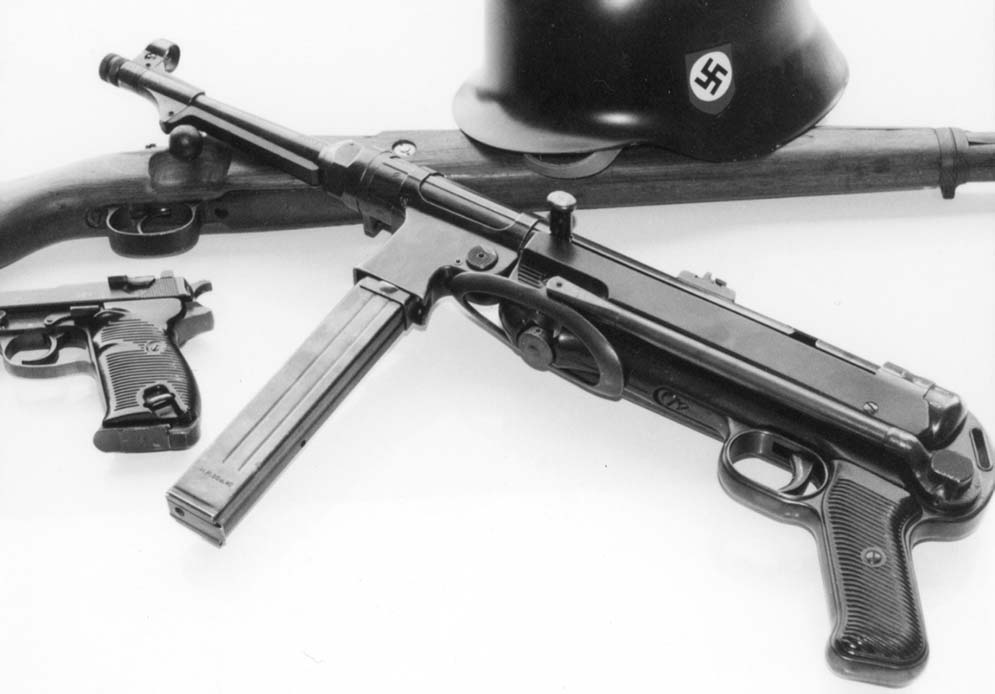By Frank Iannamico
The Original vs The Tube Gun
“Original or a tube gun?” This is a dilemma that many machine gun purchasers face at one time or another. Original guns are usually preferred, but there are many factors that make the choice to buy an original gun unpractical, or difficult.
An original gun, can first of all be difficult to locate. It can also be much more expensive than a non original gun, sometimes costing two to three times more. As you are probably well aware, no machine gun is cheap. Original guns, sometimes over fifty years old, can also be hard to find in decent original condition.
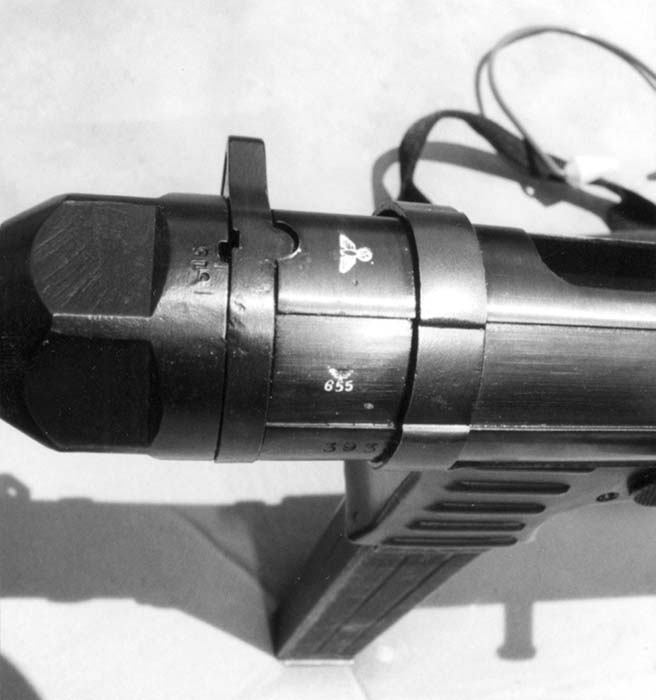
On the other hand, “tube” or remanufactured guns have usually been refinished and can be more appealing to the eye. Some will argue that wear and tear on an original weapon adds character and authenticity.
This of course raises the question, “Why are you considering the purchase of a machine gun?” People purchase them for shooting or for their collections. The most popular category would be “both”.
This brings another question to the table. How badly do you want to shoot an original gun? It is a fact that a lot of people purchase an original gun as a collector/shooter. Soon they begin to feel they are devaluing their original gun too much by firing it. They then purchase a tube gun of the same type for shooting and they then keep the original as a collector’s item only. Ideally that’s the way to go, but unfortunately few people are able to do that.
The purpose of this article is to compare an original, all-matching, German MP40 vs an MP4O with a receiver of a new manufacture, commonly known as a tube gun. We will compare features and performance of each of the guns.
The German MP40, like many German weapons of WWII vintage, have the weapons serial number (or a portion of the serial number) stamped on virtually every part of the gun: the bolt, barrel, stock etc. When a gun has all the matching original parts still intact, the gun is usually referred to as an “all matching gun”. An all-matching gun is considered far more valuable than one that is not.
The Original MP40 used in the test is a WWII gun of German manufacture. It is all-matching, and has 85 to 90% of the original finish remaining. It has the early flat side magazine housing and black plastic furniture. It is marked fxo 41, indicating that it was manufactured in 1941 by Haenel in Germany during WWII. For shooting purposes a barrel, bolt assembly and firing pin/recoil spring from a MP40 spare parts kit are installed. If a part (such as a barrel) is damaged on an all matching gun it will devalue it considerably. I might mention at this time that I rarely fire this gun, and its not because I don’t want to.
The MP40 came from a police department in Texas, where it was registered in 1967. No one currently at the department could remember where it came from, although before it gained a display spot on the wall, officers had taken it out on patrol. No one could remember ever having fired it in the line of duty.
The second gun used in the test was the MP40 tube gun. It belongs to gun collector/shooter Herb Plummer. He bought it a while ago for about half the going rate of an original one. Herb was looking for an original MP40, but he could not find one in suitable condition. The originals he did locate were very expensive, and not in the condition he wanted. Most were not all-matching weapons. Also, he says that he was looking for an MP40 to shoot, not to look at.
Herb purchased his MP40 directly from class II manufacturer Charlie Erb who also manufactured and registered the receiver tube. The trigger/lower housing assembly was marked bnz 42, indicating that it was manufactured in 1942. Most of the other parts were also marked bnz, the manufacturing code for Steyr.
The tube MP40 is also an all-matching gun. Charlie Erb makes them that way. He very carefully marks all his MP40s so that all the numbered parts match the serial number he assigned the tubes he manufactured (all prior to 1986). His serial numbers end in a small case letter like the originals.
At first glance Charlie’s guns look like all-matching originals. Even the Nazi eagles are stamped on the receiver tube. The tube MP40 had a blue finish that is very close to the gloss and color of an original gun. None of the original markings on the parts had been buffed away, which often gives away a poor reblue job.
Both guns fired and handled in much the same way. Both had the normal MP40 “wobbly stock”. The cyclic rate was, as expected, very similar. Both guns were 99.9% reliable. Malfunctions could usually be traced to the ammunition used. Reloads with cast lead round nose bullets were used, with no feeding or functioning problems. The only problem with lubricated cast lead bullets is that (during a long burst) the burning lube makes a lot of smoke, obscuring the target.
Accuracy of both MP40s was about the same. The cyclic rate is too fast to easily get off a single shot. We decided to see how many rounds we could get into a torso sized steel target at 50 yards. The best either of us could do was 18 out of 30, with a continuous 30 round burst.
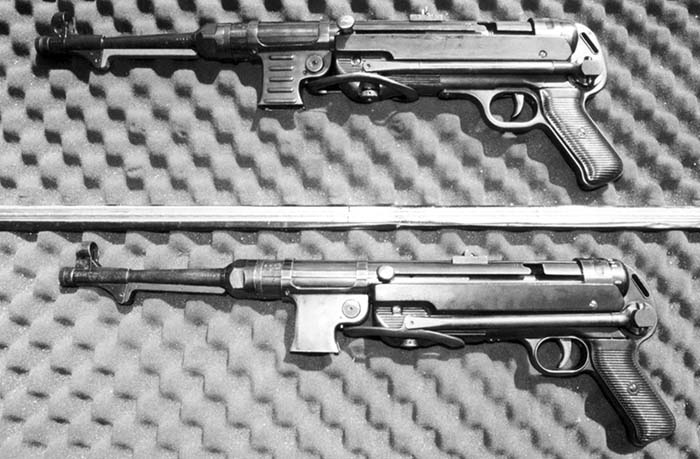
The biggest problem with accuracy was the movement of the wobbly stock. Every time I would start a continuous burst, the stock would move, throwing me off target. About the time I corrected my aim, the magazine would be empty. I have fired other subguns at the same target, in the same manner, and had a lot more hits. I’m not saying the MP40 is an inaccurate weapon. Its weight and balance make it one of the better subguns of WWII. But the stock makes it difficult to shoot accurately. Unfortunately the MP40 stock is not easily repaired.
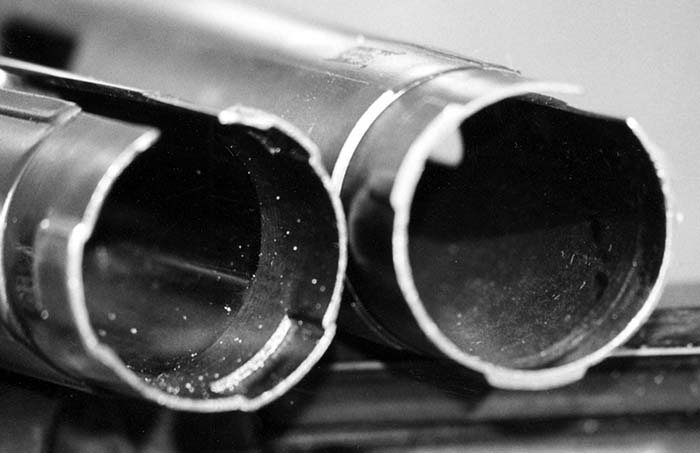
There was a problem with some parts not fitting the tube gun. One spare bolt would not interchange into the tube, while two others fit properly. There was a problem installing a spare trigger housing. All the parts fit onto the original tube with no problem. This isn’t cause for excessive concern, as it is common for original MP40 parts not to be 100% interchangeable. This is especially so between different manufacturers.
The tube MP40 is all-original WWII manufacture, except of course for the stripped tube. In this case the receiver is so marked that only upon close examination can you tell that it is not an original gun. The easiest way to identify a tube gun from an original is by examining the inside of the tube. An original gun will be fluted inside as it is on the outside. New-manufacture receiver tubes will usually be smooth inside. This applies only to the MP40. The earlier original MP38’s were manufactured with a smooth surface inside the receivers.
Under combat conditions the flutes or channels inside the MP40 tube made it more reliable, by giving any dirt or debris inside the tube a place to go. This helped prevent stoppages and jamming, a potentially deadly situation for the operator in a fire fight.
Machining flutes or channels in new manufacture, pre-1986 MP40 receivers was neither cost effective nor necessary for a recreational machine gun.
SUMMARY: Both guns were equally fun to shoot. Original MP40s have gone up in price considerably in the last few years. So much so that they are now in the collector only category. That means only shooting them occasionally, if at all. One big advantage is that original guns are considered C&R or Curio and Relics.
This is advantageous to those who reside in states that only allow C&R machine guns, or those who have a C&R license. Tube guns are not considered either curio or relics by the BATF.
Both guns functioned, and fired identically. Both MP40s are sure to continue to go up in value. Conclusion? The choice is basically up to you and your bank account.
MP40 Field Strip – Unload Firearm!!
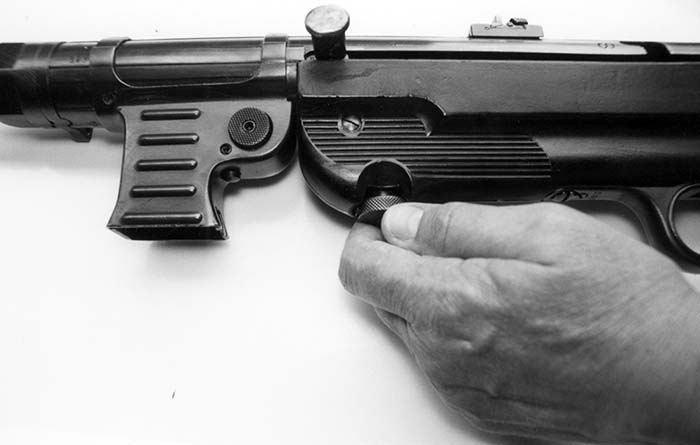
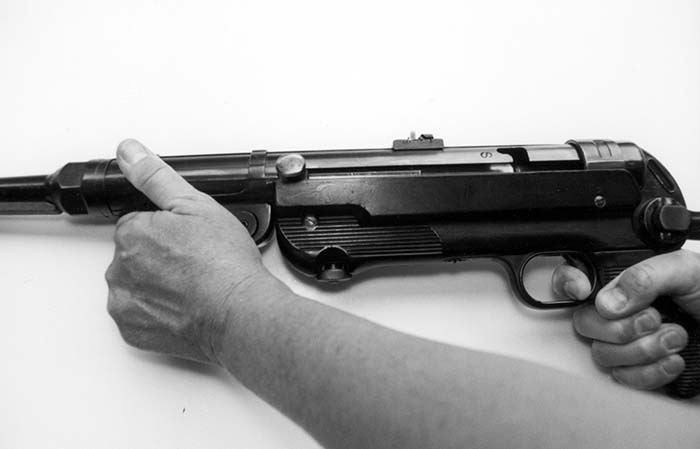
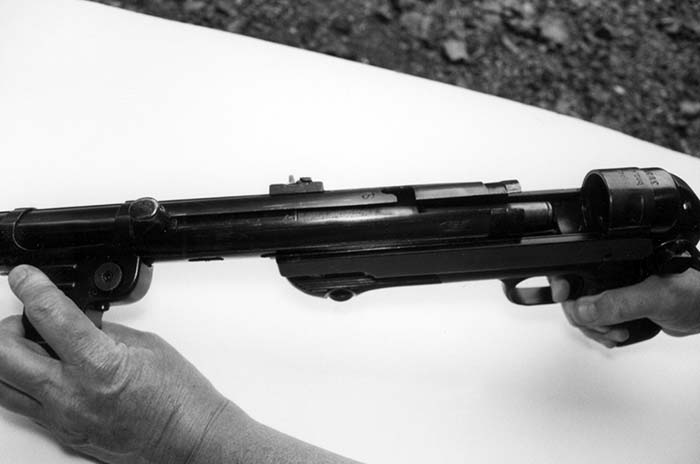

| This article first appeared in Small Arms Review V1N3 (December 1997) |



